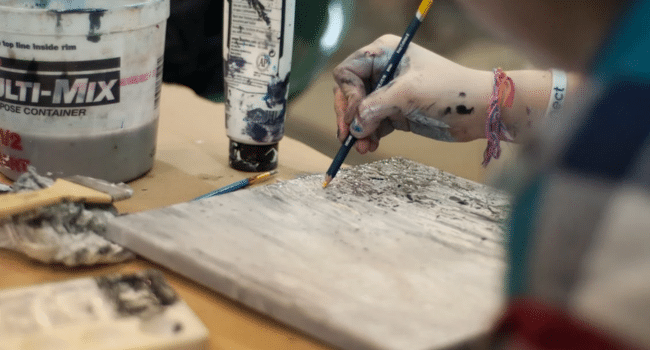Table of Contents
Quality art demands more than simply skill; it also necessitates the use of appropriate tools, techniques, and environments. The essential components that any artist needs to improve their work are outlined in this article. These fundamentals serve as the foundation for any masterpiece, from selecting premium materials to perfecting techniques and creating a distinct artistic vision. To further improve and refine your creativity, constructive criticism and a tidy workspace are also essential.
High-Quality Materials
Producing art of a high caliber requires using materials of the highest caliber. Investing in high-quality paints, brushes, canvas, or paper guarantees that your artwork will not only look fantastic but also endure over time. Better pigmentation in premium paints produces vivid, long-lasting hues. High-quality brushes provide a more even and accurate application, which can significantly improve the details in your work. Selecting the appropriate canvas or paper has an impact on the piece’s endurance and texture. Although it may be alluring to cut costs by purchasing less expensive supplies, keep in mind that employing the best instruments available can improve your artwork and provide you with a strong base on which to build your masterpieces.
Proper Technique and Skill Development
To produce work of a high caliber, you must constantly improve your abilities and master the appropriate approaches. Concentrate on the basics, including color theory, shading, and drawing. Any outstanding piece of art is built on these foundational elements. To improve your techniques, make use of resources such as instructional books, art schools, and internet tutorials. There are a ton of courses available on websites like Skillshare and YouTube, suited to different ability levels. Regular practice will help you hone your skills. Since errors are a necessary component of the creative process, don’t be scared to try new things and learn from them. You can ensure that every piece you create reflects your finest efforts and develops over time in terms of complexity and beauty by making time to work on your skills.
Creative Vision and Concept Development
For art to be of high quality, one must develop a distinct artistic vision and solid conceptions. Begin by generating ideas and investigating various themes that pique your interest. Prior to beginning the finished piece, draft and develop your ideas. This step of planning facilitates execution and aids in outcome visualization. Consider the idea or feeling you wish to portray in your artwork. Having a clear vision for your work can help you remain consistent and focused while being creative. Accept and showcase your flair in your work. Never forget that your artwork should capture your voice and viewpoint. Strong ideas and a clear vision help you produce works of art that are memorable to visitors and stand out in the crowd.
Studio Setup and Environment
To produce high-quality art, one must arrange their workstation in an inspiring and well-organized manner. With a dedicated studio space, you can concentrate and work effectively. Make sure the lighting in your studio is adequate, with both artificial and natural lighting to accommodate various times of the day. Ensure that your supplies and tools are readily available and well-organized. For artists working with canvases, having canvas stretcher bars readily accessible can be crucial for creating and maintaining your artwork. To keep your workspace organized, spend money on necessities like easels, drawing tables, and storage containers. Add inspiring objects to your studio, such as plants, art books, and motivational quotations. A clean, clutter-free atmosphere promotes creativity and productivity. Make your workspace a location where you feel at ease and inspired to produce. Making your workspace functional lays the groundwork for generating your best work.
Critique and Feedback
Getting criticism and comments from others is essential to developing your artwork. You can discover areas for improvement in your work and gain new views by using constructive criticism. Consult with mentors, colleagues, and online and offline art communities for their opinions. Participate in internet forums or local art organizations to exchange your work and receive frank feedback. Be receptive to learning and keeping an open mind as you respond to criticism. Utilize the criticism to improve your methods and ideas. Remember that new perspectives and eyesight are beneficial to even the most seasoned artists. Accept criticism as an important component of your creative process. You may improve the quality of your work and grow as an artist by actively seeking and implementing feedback.
Conclusion
To sum up, creating art of a high caliber requires a variety of elements, including premium supplies, skilled labor, a distinct creative vision, a motivating workstation, and insightful criticism. Artists can achieve unprecedented levels of quality in their work by investing in these five necessities. Every component works together to create a whole that makes your artwork both memorable and impactful on viewers. Accept these methods and incorporate them into your creative process. The quality and depth of your work will significantly improve as you continue to hone your techniques and methods.
Image Source – Pexels
